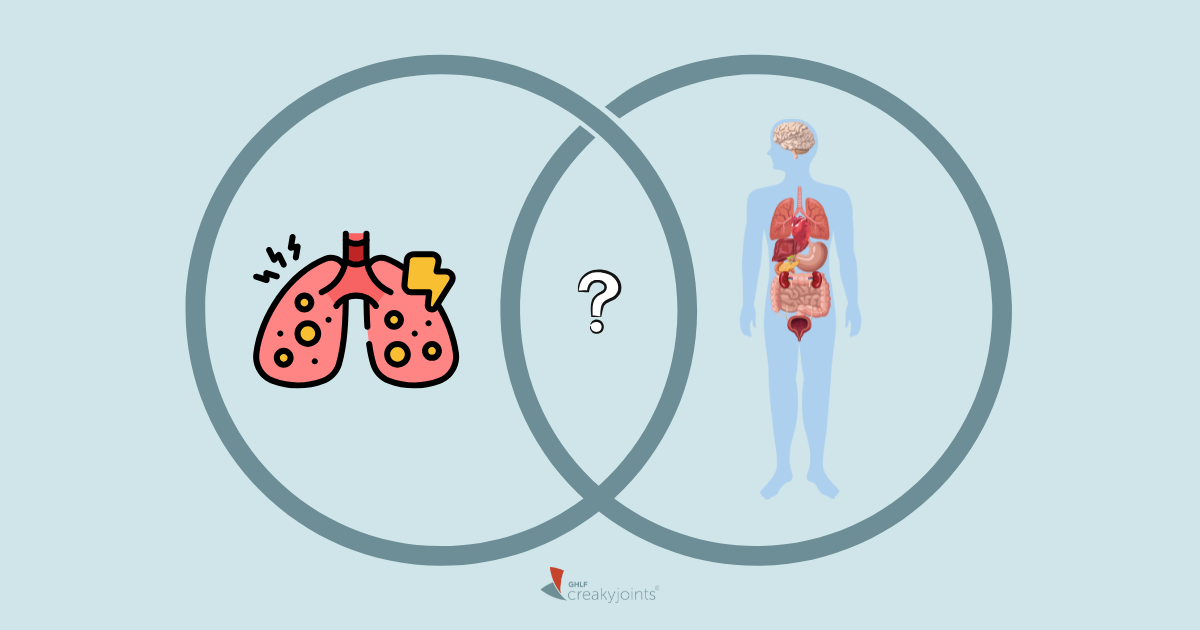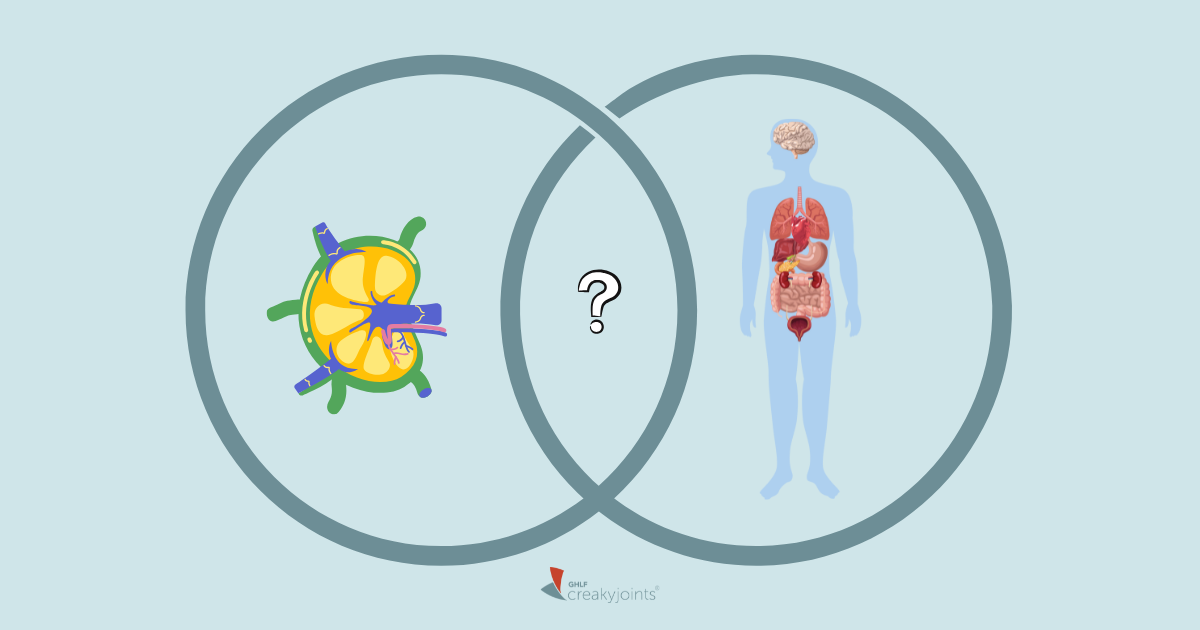When you see or hear the word mindfulness, what do you visualize? If your mind instantly pictures someone sitting in a dimly lit room meditating, you’re not alone. There is a widespread myth about mindfulness being the same as meditation.
While meditation is a component of mindfulness, it’s just one piece of the puzzle. Mindfulness can be defined as the state of being fully present and aware in the current moment, without judgment or attachment. It involves intentionally directing one’s attention to the present experience, observing thoughts, feelings, bodily sensations, and the surrounding environment with an attitude of openness and acceptance.
“It’s being in the present moment,” says clinical psychologist Laurie Ferguson, PhD, Director of Patient Well-Being at the Global Healthy Living Foundation, whose area of research focuses on developing resilient attitudes and behaviors, particularly in times of chronic pain and stress. “It’s a way to help your mind, your nervous system, your body, sort of let go of the way our mind chatter and take us in various ways and come into the present moment.”
Here, we talk with Dr. Ferguson about how mindfulness extends beyond meditation and can be a useful tool for patients living with chronic illnesses like rheumatoid arthritis. Our discussion was inspired by recent research highlighted in the article titled “Mindfulness-Based Stress Reduction with Individuals Who Have Rheumatoid Arthritis: Evaluating Depression and Anxiety as Mediators of Change in Disease Activity.”
Using Mindfulness to Ease Depression
The study found that participants who underwent an eight-week Mindfulness-Based Stress Reduction (MBSR) program experienced lower levels of depression compared to those in the control group.
“In this study, we’re getting some hard quantitative data that indicates that mindfulness practices, when used deliberately and over time, can help reduce the symptoms of depression,” says Dr. Ferguson. “That also has kind of a downstream effect on the actual symptoms of RA. It’s very encouraging.” Depression is quite common among people with rheumatoid arthritis. It affects around 13 to 42 percent of them, which is at least double or even four times higher than the general population, according to the National Institutes of Health.
That said, Dr. Ferguson notes that mindfulness therapy should not replace traditional treatments. “It’s absolutely an adjunct,” she says, “It does not replace any medication, any therapy, or any other part of the treatment plan.”
How Mindfulness Helps Us Lower Stress
When you engage in mindfulness exercises — such as deep breathing, meditation, or gentle yoga — your body activates the parasympathetic nervous system.
This is the part of your autonomic nervous system that calms the body down after the stress response. It is often referred to as the “rest-and-digest” system of the body and serves as a counterbalance to the sympathetic nervous system, which is associated with the “fight-or-flight” responses.
Mindfulness exercises help shift your body’s balance away from the stress-induced sympathetic responses and toward the calming parasympathetic responses, which leads to a decrease in heart rate, a lowering of blood pressure, and a reduction in hormone levels. For example, deep breathing exercises stimulate the vagus nerve, a crucial part of the parasympathetic system, which sends a message to your brain to relax and calm down. This can help alleviate symptoms of anxiety, stress, and tension that often accompany chronic illness.
Types of Mindfulness
Mindfulness can come in many forms, including mindful breathing, mindful eating, mindful walking, mindful awareness of your thoughts, and the body scan practice. Here are a few ways to integrate mindfulness into your day.
Focus on Breath
According to The Cleveland Clinic, we can use breathing as a gateway to mindfulness and calming the nervous system. Try employing breathing techniques such as box breathing, also known as 4×4 breathing or equal part breathing. In this breathing technique, you inhale, hold your breath, exhale, and then hold again, each for a count of four, mirroring the four sides of a box.
Embrace the Water
Immerse yourself in water to eliminate distractions and focus on internal awareness. Engaging in swimming or floating activities helps to relieve physical stress, promote mobility, and synchronize movement and breathing. An analysis of 23 articles on the subject indicate that leisure swimming and aquatic therapy are helpful for mental health management.
Walk with Purpose
Slow down your movements and breath during walking to enhance mindfulness. By consciously using stabilizing muscles, you can strengthen your core, alleviate body pain, and improve balance. Pay attention to details like relaxed breathing, distributing weight evenly, and maintaining stable shoulders.
Have a Cup of Hot Tea
There’s no wonder a cup of hot tea seems to calm us down. A systemic search of research studies suggests that green tea reduces anxiety and improves cognition and brain function. Transform the act of drinking tea into a mindfulness exercise by fully experiencing the preparation process, the aroma, the sensation of lifting the cup, and the warmth it brings. By slowing down and immersing yourself in the present moment of sipping tea, you can quiet your mind and enjoy a sense of calm.
Connect with Nature
Disconnect from technology and engage with nature to heighten your senses and induce relaxation. An often cited study revealed that spending at least two hours each week in nature leads to self-reporting greater well-being. Immerse yourself in the sounds, scents, and textures of the natural environment to encourage a state of mindfulness.
Engage in Gazing
Choose a focal point, such as a candle flame, and gaze steadily. Resisting the urge to look away strengthens your ability to meditate and cultivates a balanced and calm state of mind.
Utilize Guided Meditation
Guided meditation sessions facilitate internal healing and stress release. You can start off meditating for only one minute and it can be done right in the comfort of your car, noted wellness and breast medicine specialist Roxanne B. Sukol, MD, in a recent Cleveland Clinic article. Put your keys in your lap and close your eyes. Breathe in for five seconds and out for five seconds. Do this five times. Soon you may find yourself wanting to meditate for longer.
Be Mindful of Stretching
Adopt a mindful approach to stretching by focusing on creating space in your body for breath to flow and generate expansion from within. Perform gentle stretches, paying attention to each breath and maintaining an even breathing pattern.
Tips to Start Practicing Mindfulness
Remember that mindfulness is a skill that can be developed through regular practice. Dedicate your full attention to activities you enjoy, and when distractions arise, gently guide your focus back to the practice without judgment.
Here are a few more tips from Dr. Ferguson to seamlessly integrate mindfulness into your daily routine and enhance your overall well-being.
- Take a few moments to breathe before and after taking your medication. Pay attention to your breathing.
- As you learn new techniques, mix them up and move them around in your routine.
- Take a class to receive training. Places that often offer mindfulness classes include hospitals, community centers, and community colleges. There are many great online classes, too.
- Learn with others. Having the support of a class really helps to learn with fidelity.
- Consider purchasing or downloading a workbook.
- Practice mindfulness during everyday tasks like washing dishes or showering. No special equipment needed.
- Be consistent. According to the study, participants who adopted mindfulness practices into their own lives experience positive effects four to six months after the completion of the eight-week program.
Although mindfulness offers numerous benefits, it may not be suitable for everyone. Dr. Ferguson highlights that individuals who have experienced trauma may find mindfulness challenging as it can evoke uncomfortable emotions requiring professional support for processing. Additionally, for those with severe depression, stabilizing may require extended therapy and medication support under the guidance of a therapist.
Be a More Proactive Patient with PatientSpot
PatientSpot (formerly ArthritisPower) is a patient-led, patient-centered research registry for people living with chronic conditions. You can participate in voluntary research studies about your health conditions and use the app to track your symptoms, disease activity, and medications — and share with your doctor. Learn more and sign up here.
Fogarty, F.A., et al. Mindfulness-Based Stress Reduction with Individuals Who Have Rheumatoid Arthritis: Evaluating Depression and Anxiety as Mediators of Change in Disease Activity. Mindfulness. 2019. doi: https://doi.org/10.1007/s12671-018-1090-1 .
How Box Breathing Can Help You Destress. The Cleveland Clinic. August 16, 2021. https://health.clevelandclinic.org/box-breathing-benefits/.
Parasympathetic Nervous System (PSNS). The Cleveland Clinic. 2022. https://my.clevelandclinic.org/health/body/23266-parasympathetic-nervous-system-psns.
Taylor-Gjevre, R, et al. “Assessment of Sleep Health in Patients with Rheumatic Disease.” International Journal of Clinical Rheumatology. April 2011. doi: https://doi.org/10.2217/ijr.11.6.





